This post is a gallery of Durga Puja pandal image highlights from our explorations of Kolkata pandals throughout the following three days of the holiday. We admired some pandals for the beauty and creativity of their designs, and others for the mindbogglingly extensive craftsmanship that was required for their creation!
A South Kolkata pandal decorated entirely using braided jute.
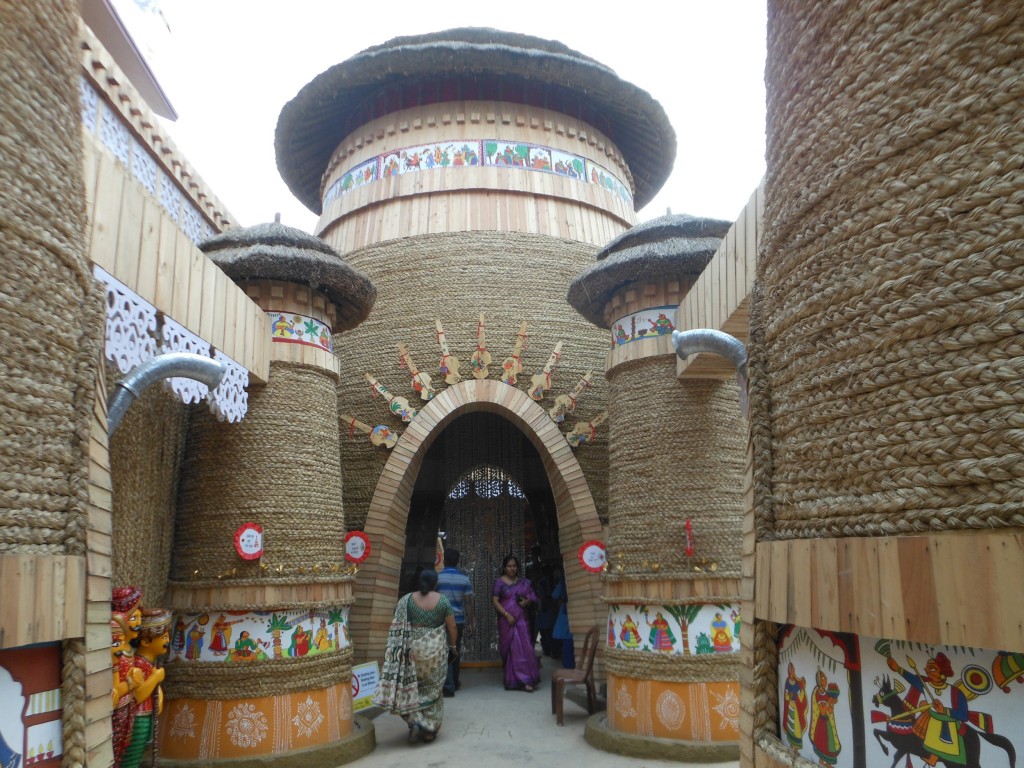

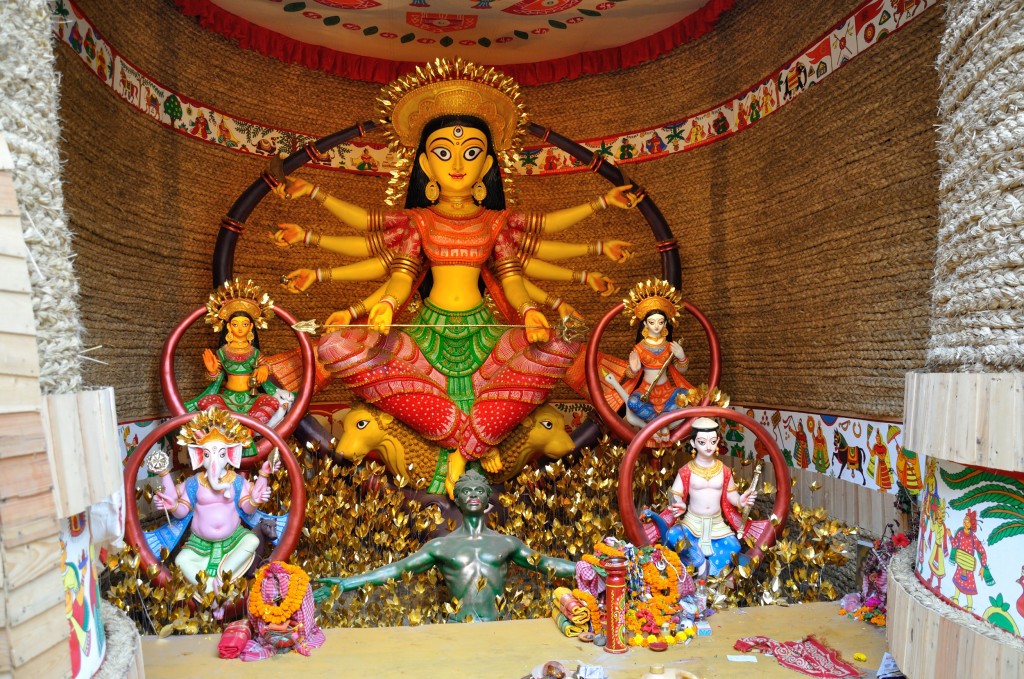
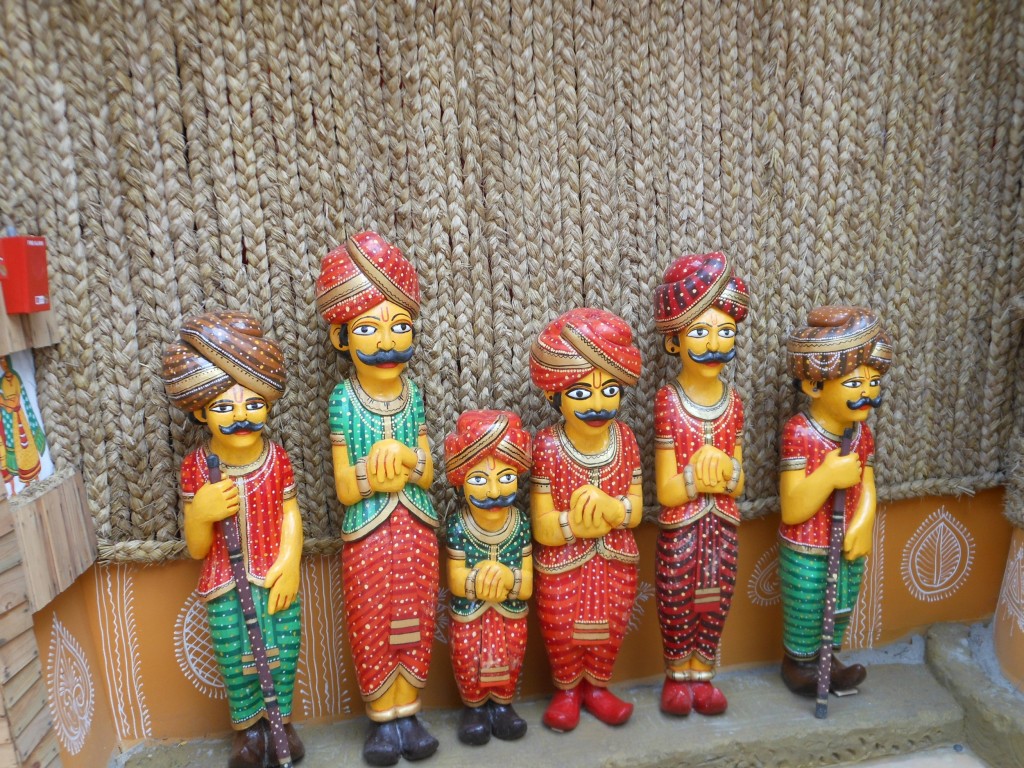
A Central Kolkata gilded beauty –
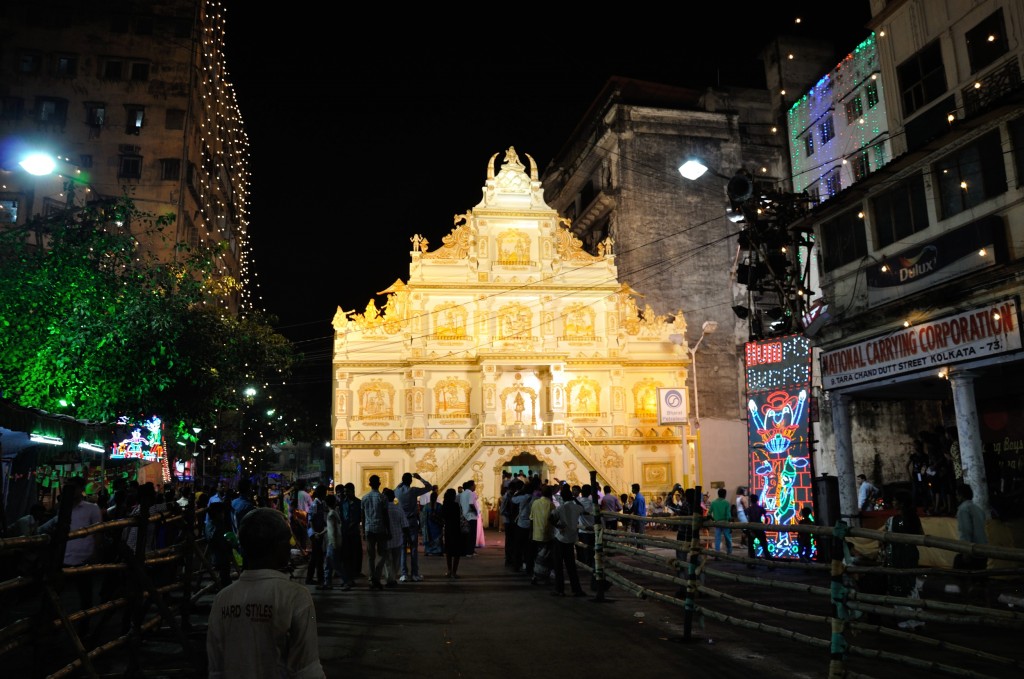


With images that are highly realistic — this pandal is also non-traditional in the sense that it includes many other figures besides the traditional scene of Durga, Ganesh, Lakshmi, Saraswati, Kartik, Mahisasura, and the Lion. Gods such as Brahma are also present, in addition to several human and animal onlookers.

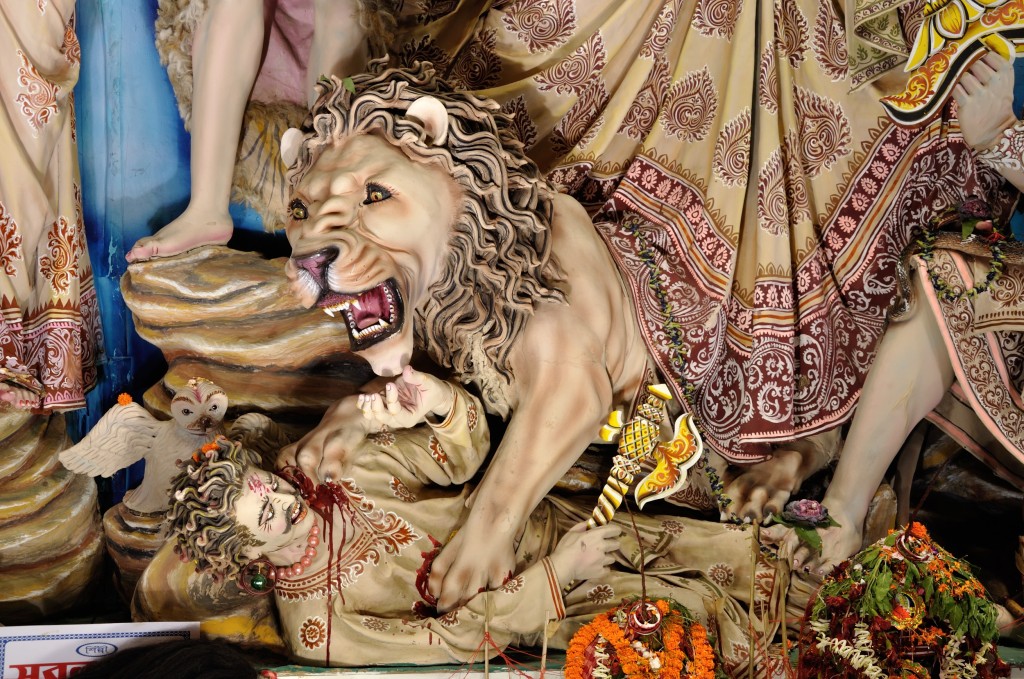 Durga’s lion atop Mahisharsura, the Buffalo Demon
Durga’s lion atop Mahisharsura, the Buffalo Demon
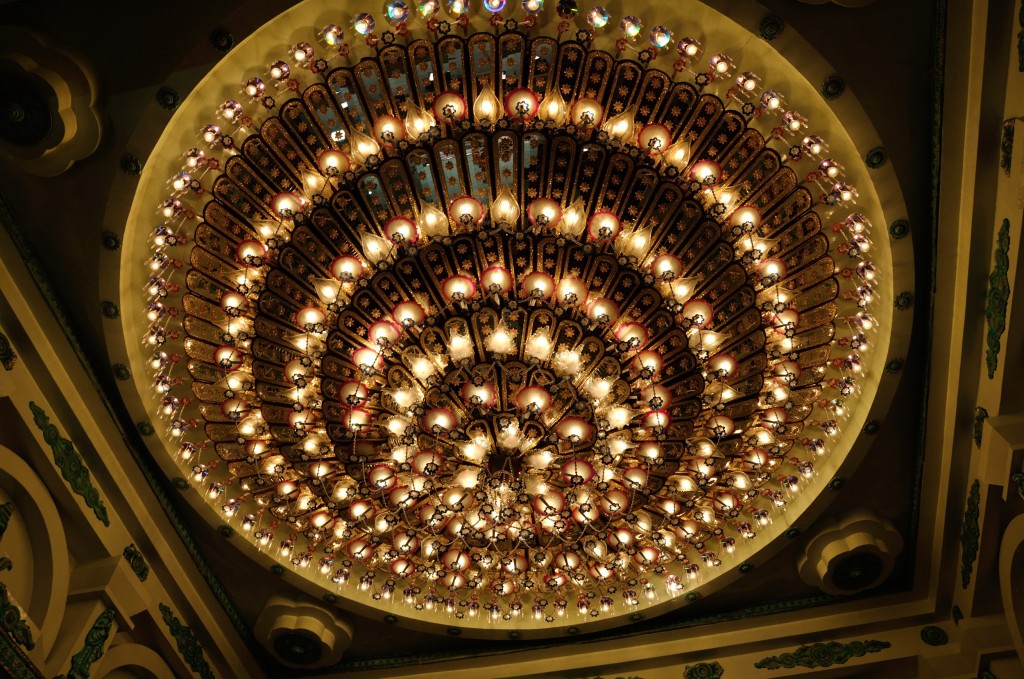
Amazing chandelier!

In South Kolkata, a hybrid pandal of peacock, boat, and stone temple
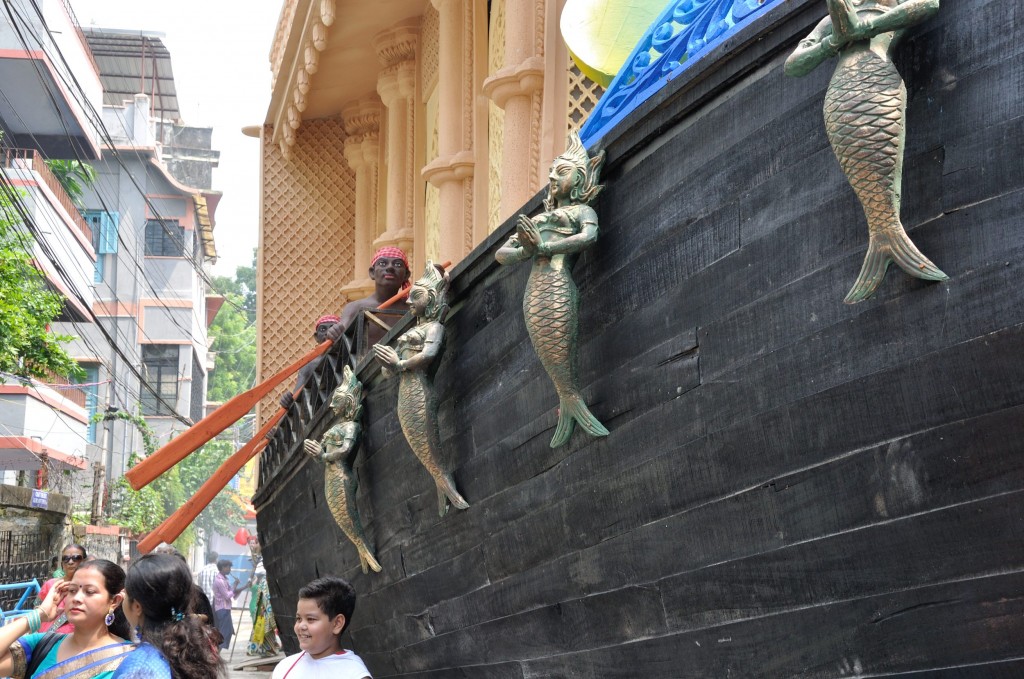
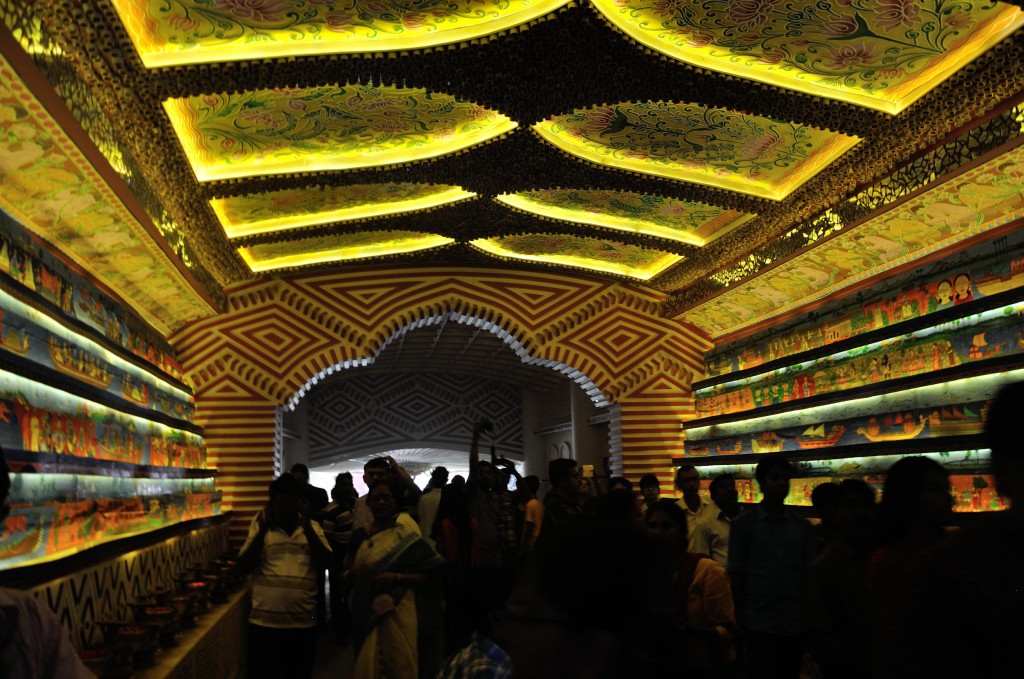
the “boat’s” interior decorations
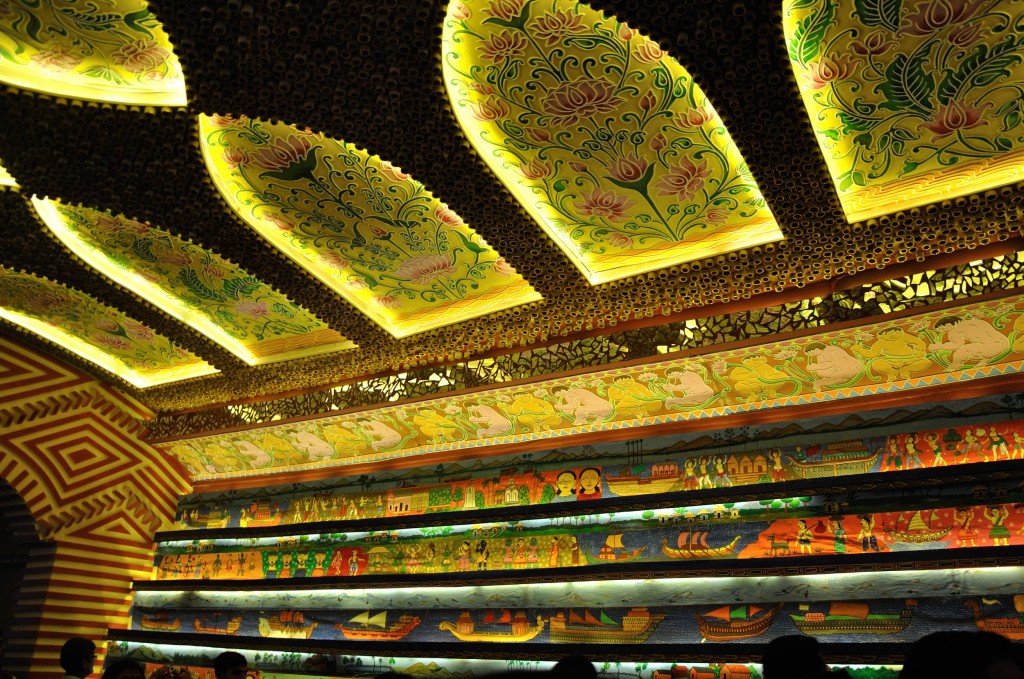
 A priest performs the traditional rites at the foot of this pandal’s Durga image.
A priest performs the traditional rites at the foot of this pandal’s Durga image.
Waiting in line to go inside this monumental pandal near College Street, the famous central Kolkata street of booksellers.
The Durga pandal, surrounded by the stony-textured interior
The figures of this pandal also include a few image-makers, who are now forever putting the final touches on the pandal.
And out the exit we go! In the larger pandals, it is often very difficult to stay for a long time and enjoy the Durga pandal images, due to the numbers of people visiting, and the often very tight crowd controls. In a couple of the larger pandals that we visited, we spent over an hour reaching the inside of the pandal, only to have about ten seconds to look, before traffic volunteers directed us to the exit. However, in many of the community pandals, we were welcome to sit and spend as much time as we wanted.

Enjoying the camaraderie and hospitality of a community pandal.
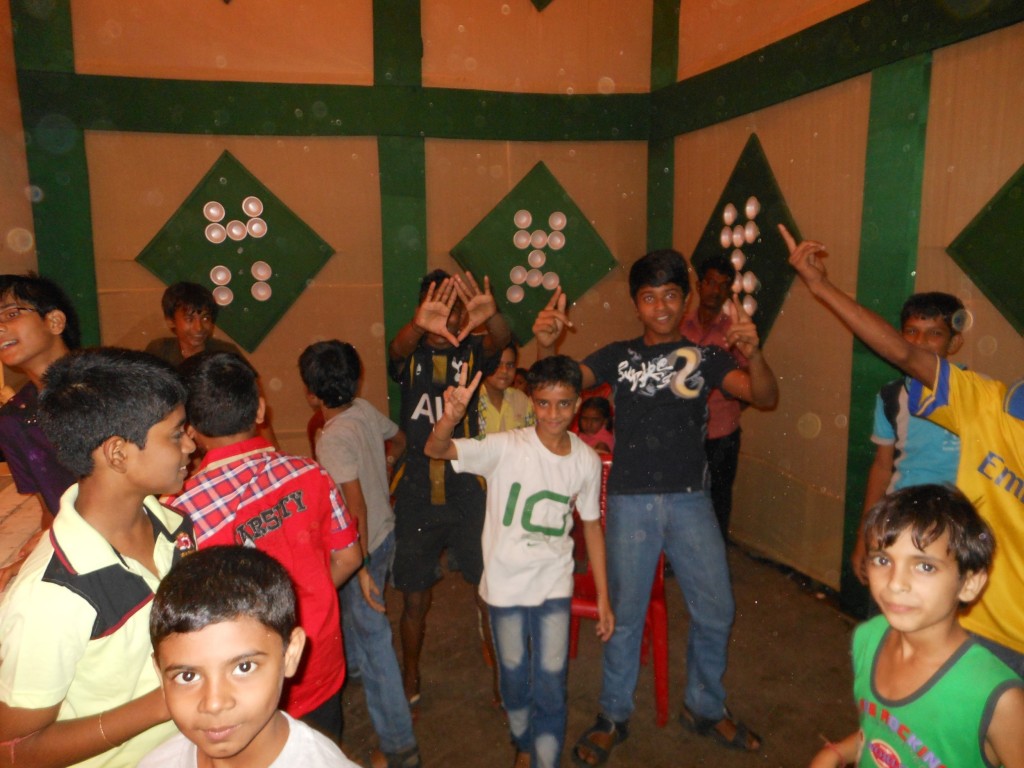
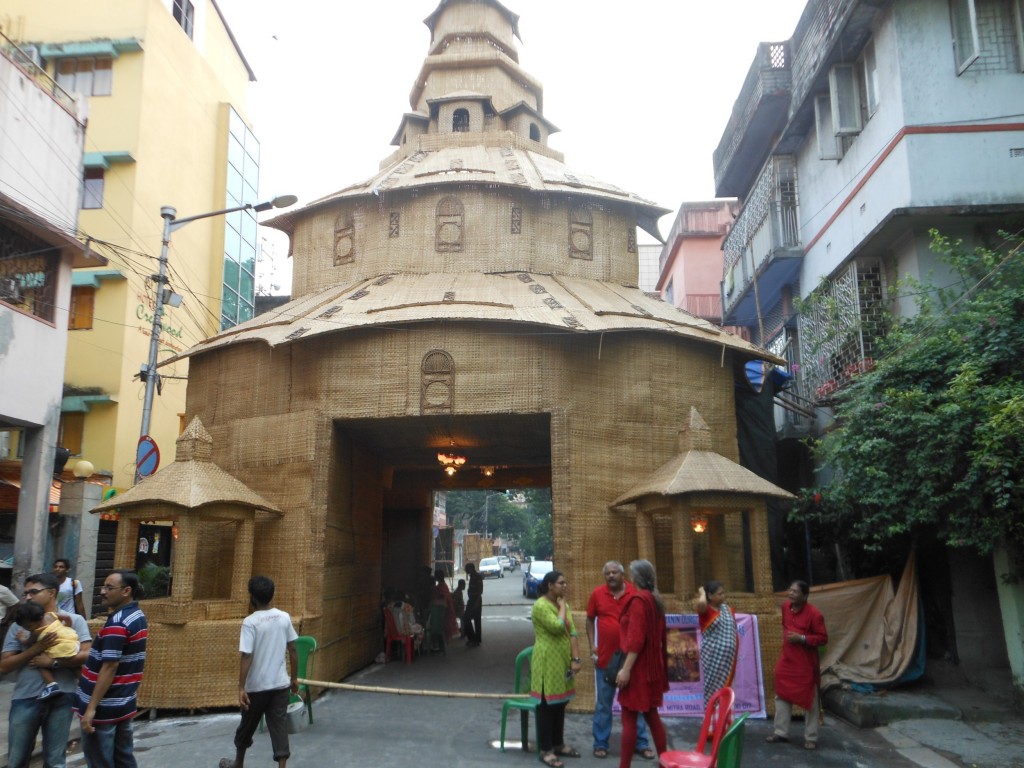 Stan and I enjoyed a delicious lunch and great conversation with the community members sponsoring this pandal near Park Circus.
Stan and I enjoyed a delicious lunch and great conversation with the community members sponsoring this pandal near Park Circus.
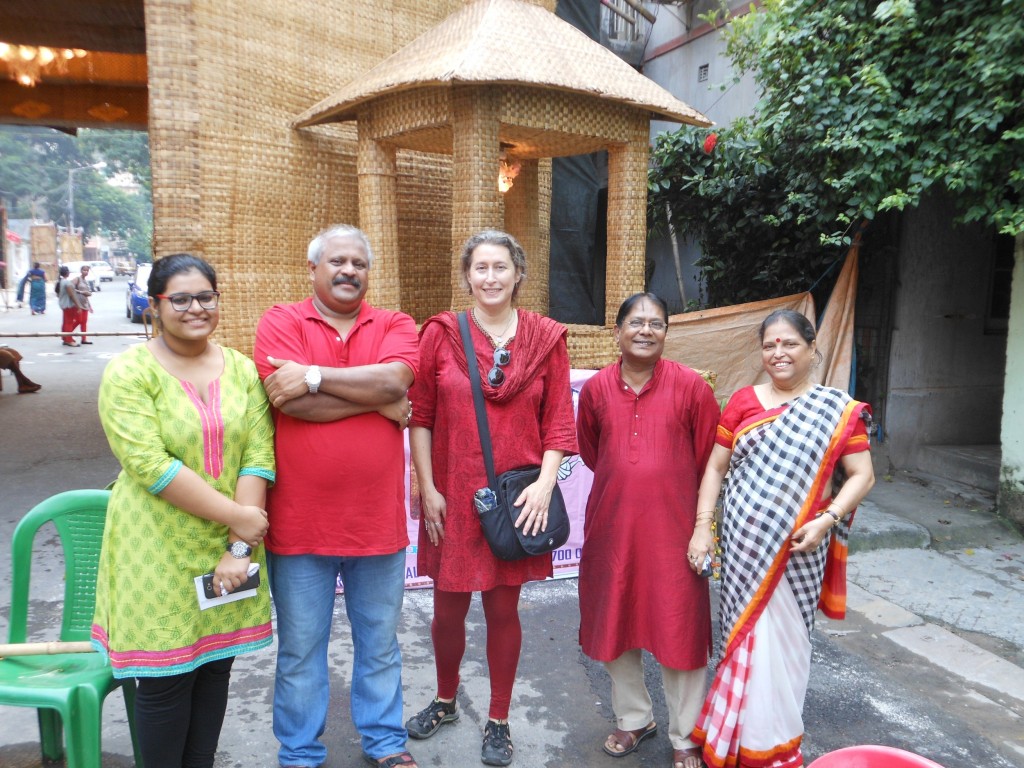
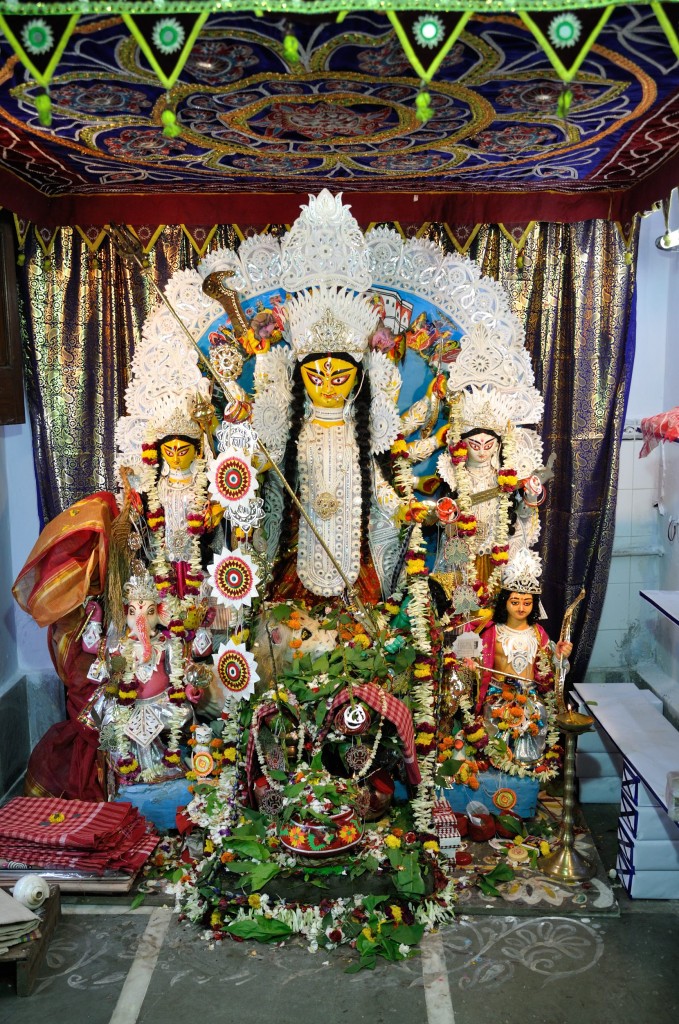
Durga pandal of a central Kolkata home, where Stan and I were invited in to share a bounty of homemade traditional sweets.
Soon the end of this holiday will come, and Durga will return home, after the pandals are physically and/or ritually immersed in flowing water.
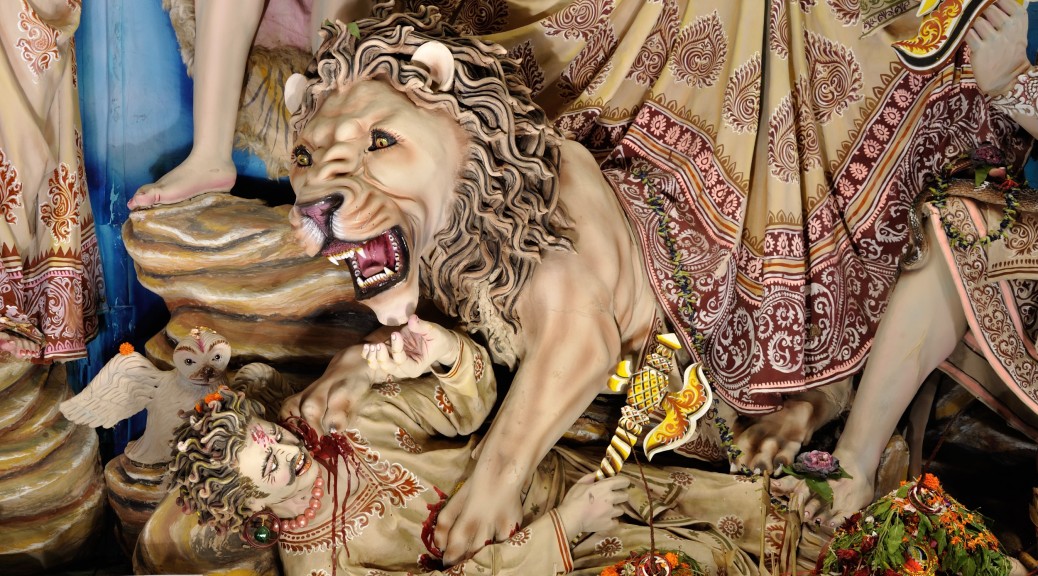

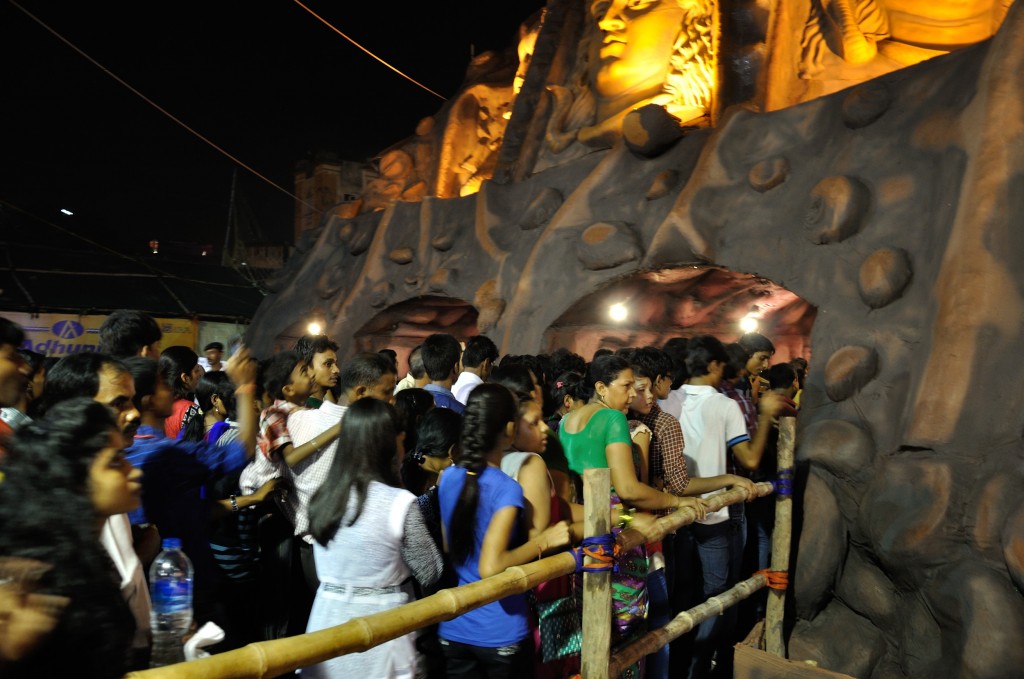


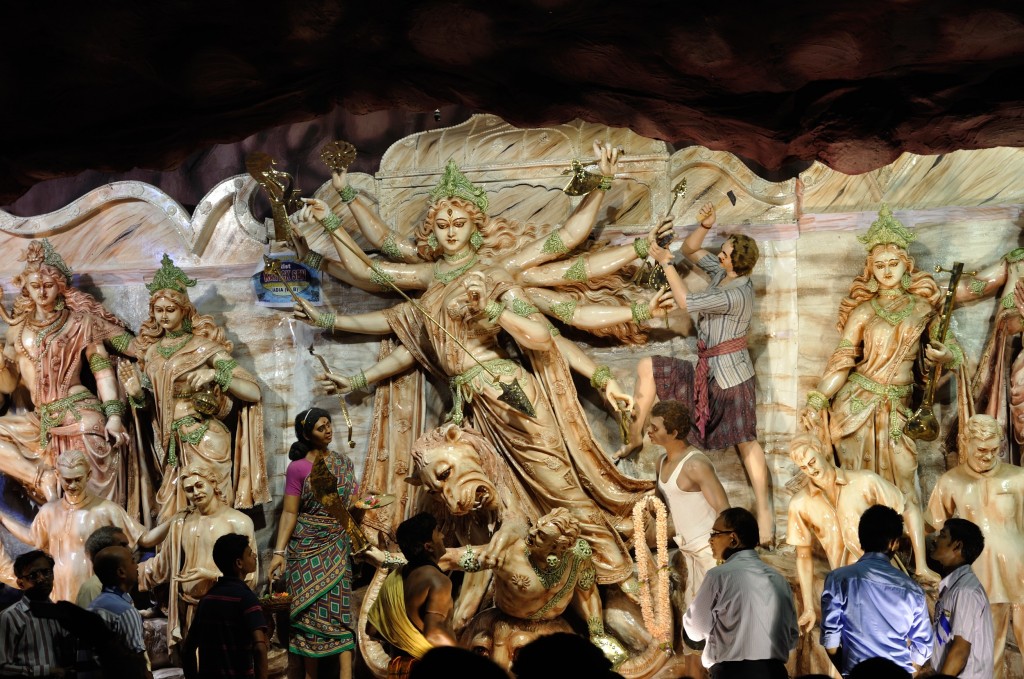
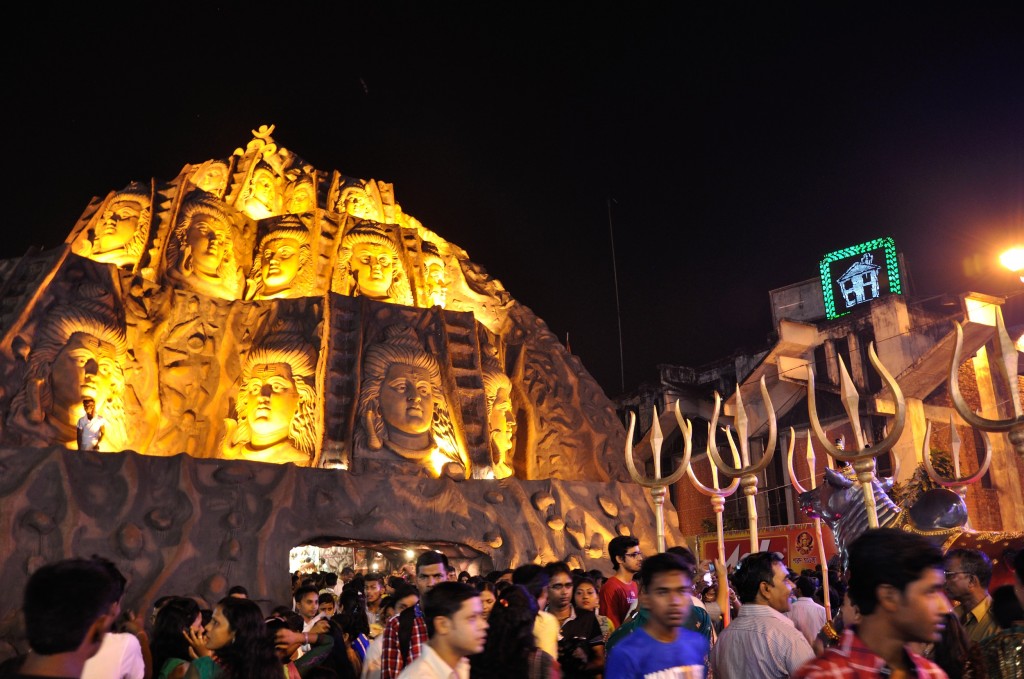
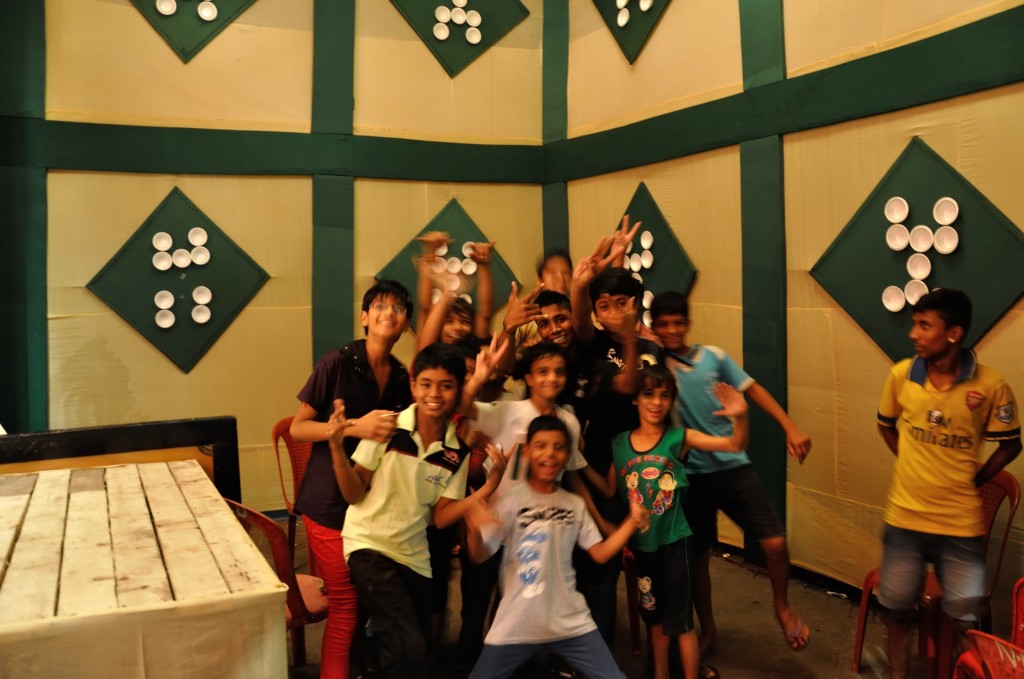
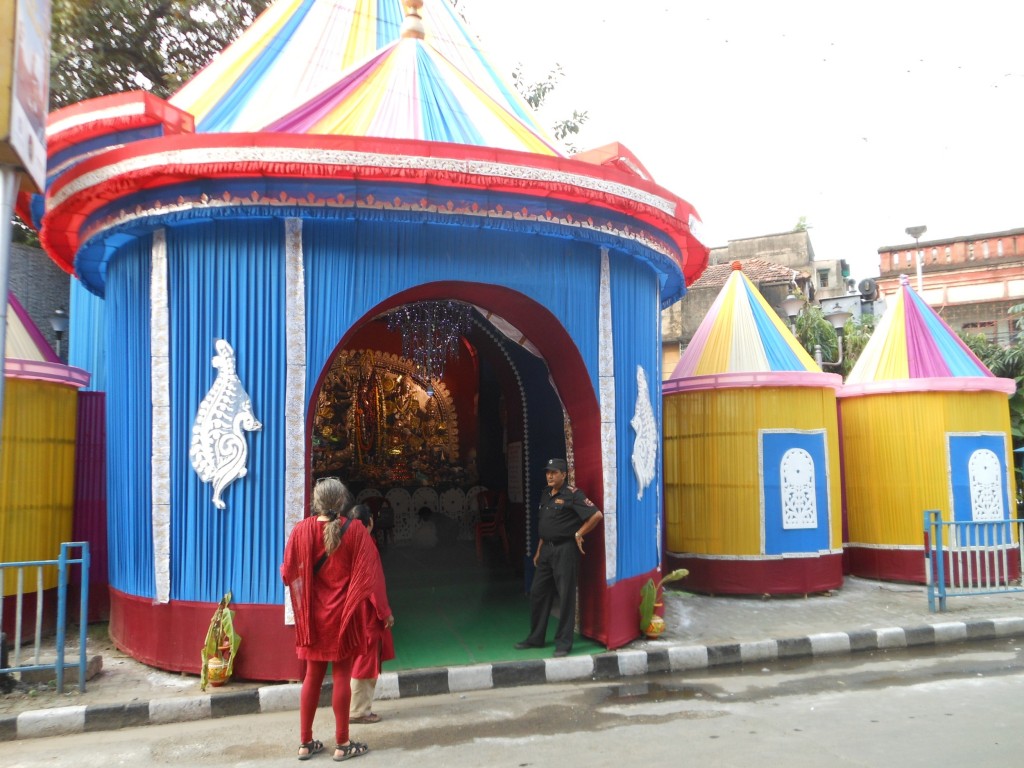



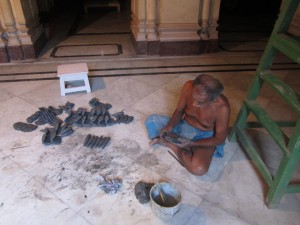

 Ganesha (above), now fully detailed and needing just one more hand!
Ganesha (above), now fully detailed and needing just one more hand!


